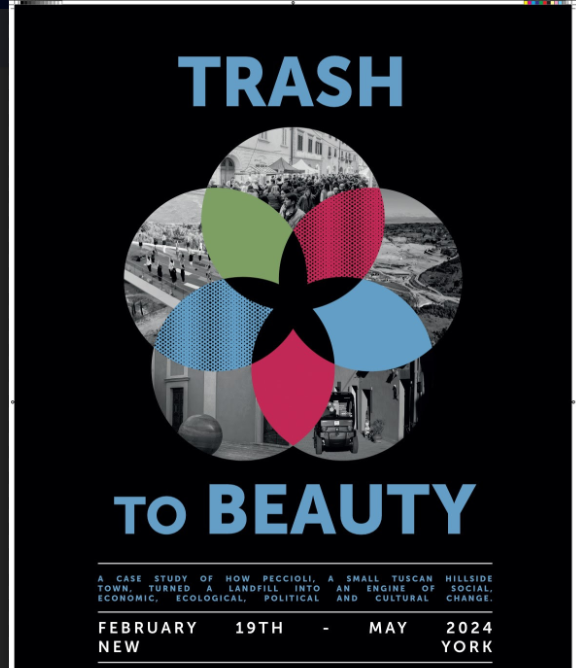“Trash to Beauty,” curated by Brett Littman, the exhibition shows how Peccioli, a small Tuscan hillside town, turned a landfill into an engine of social, economic at , ecological, political and cultural change.
Littman looks at how contemporary culture came to Peccioli and the impact it has made. Through images, a documentary film by the curator and Francesco Mazzei, and architectural models, Littman shows the radically different path the town of Peccioli took – one that places it in the center of a self-sustaining Venn diagram which prioritizes quality of life, ecology, civic infrastructure, culture, economic development, and social energy.
Around the world there are many towns, cities, and municipalities that have co-opted or used contemporary art, architecture or creatives (Richard Florida’s The Rise of the Creative Class published in 2002 lays out the blueprint for this) to burnish reputations, generate tourism and regenerate the economies of seemingly “dying” places. Art and Architecture Biennale’s, film, dance, literary or theater festivals and other site-specific “events” bring tourist dollars and publicity – but in the end they are like alien spaceships landing and then taking off again – making very little impact on the long term survival and growth of the local communities they need for labor, resources and they don’t generally compensate for the wear and tear they create on the host communities ecology and their inhabitants long term financial stability. As well, if these projects are more permanent – they often don’t sympathetically engage with their surroundings and feel out of place.
Italian Cultural Institute
686 Park Avenue, NY












